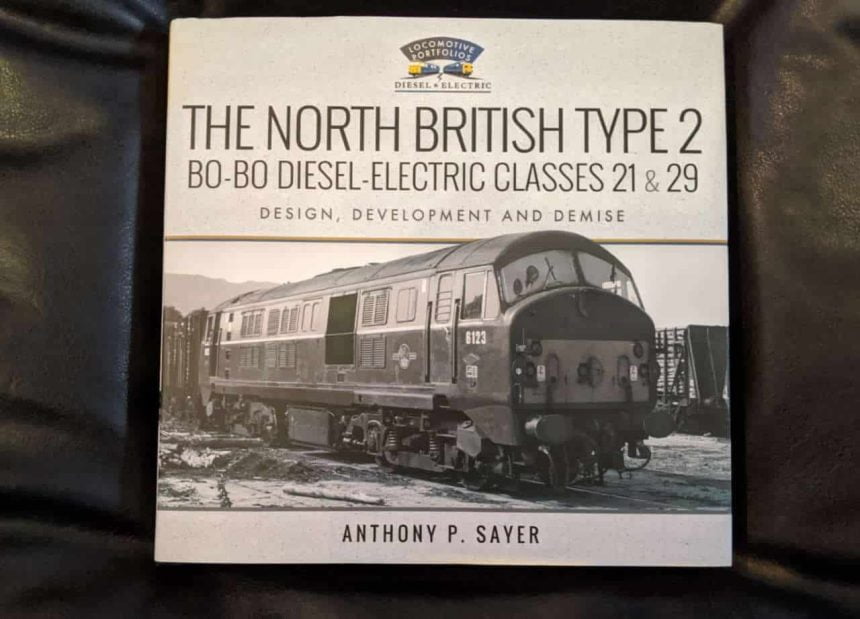Published a couple of months ago, this new release from publishers Pen & Sword is part of their Locomotive Portfolio series and covers Class 21 and 29 Bo-Bo Diesel-Electric locomotives.
This hardback book has been written by Anthony P Sayer and measures around 26cm x 25cm. It has over 290 pages in the book and has a published price of £40, but can be picked up on Amazon for around £26 at the time of writing.
The North British Diesel-Electric Type 2 locomotives were constructed during the late 1950s / early 1960s, and this book provides an in-depth history of the engines which were used on Eastern and Scottish Regions of British Railways.
The book includes a significant quantity of material which has previously not been published and reveals new insights into the Class 21s and the rebuilt Class 29s.
The book is illustrated throughout with colour and black and white photographs as well as detailed line drawings and diagrams.
This comprehensive book is split into 23 chapters.
Chapters 1-3 provide an introduction to the class along with technical considerations, the design, equipment layout, delivery and acceptance testing.
Chapter 4-5 provides the allocation history, along with the withdrawal dates and overhaul history.
Chapter 6 is the most significant in the book and includes individual locomotive history, including a picture, allocation history and any meaningful comments about the loco.
Chapters 7-10 cover the MAN engines, the performance issues with the class 21, accidents and fire damage and the identity translation of D6121 and D6122.
Chapter 11-12 covers the conversion of the locomotives from Class 21 to 29s and the detailed differences between them.
Chapter 13 and 14 cover the liveries carried by the Class 21s and 29s along with a high-level summary of their operations.
Chapters 15 and 16 cover the storage of the locomotives and where they were stored.
Chapters 17-20 look at the withdrawal and post-withdrawal period of the class along with the disposal of the locomotives.
Chapters 21-23 include the appendices and references for the book.
Like the other books in the Locomotive Portfolio series, the book is a real encyclopedia of information about the Class 21s and 29s as none of this type of locomotive remains today in preservation.
The book is available to purchase from Amazon as well as Pen & Sword.
We would like to thank Pen and Sword for providing RailAdvent with a copy of this book to review.
